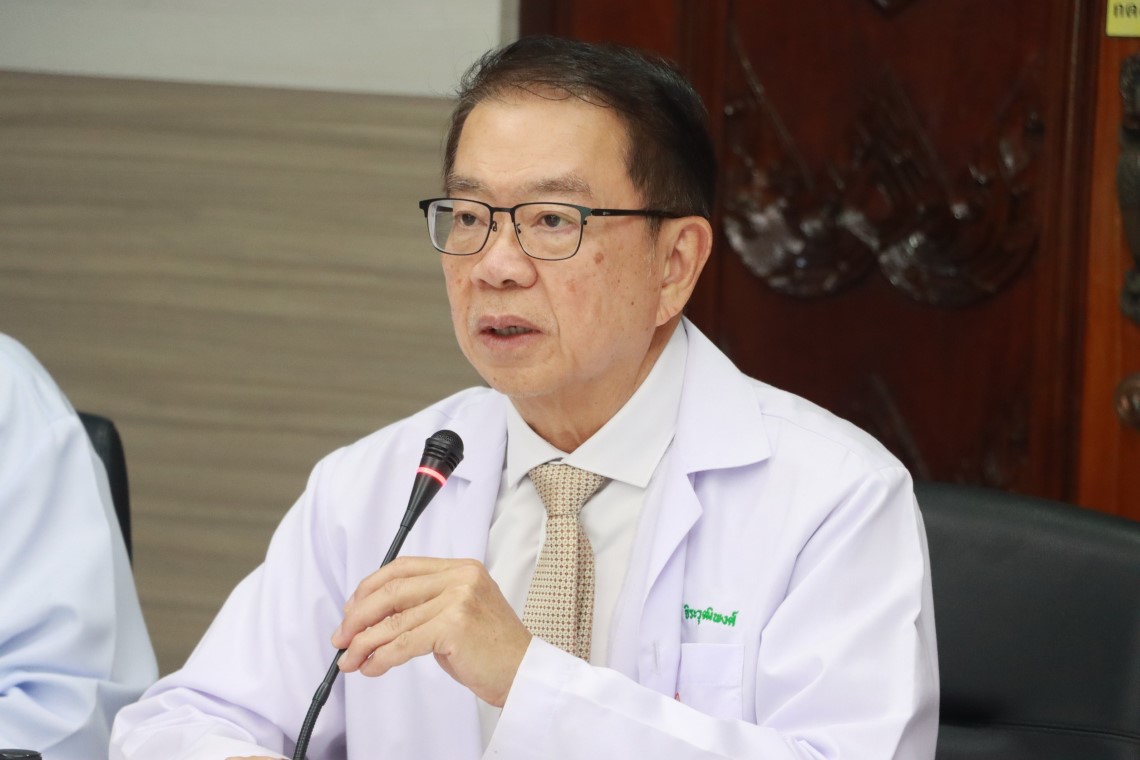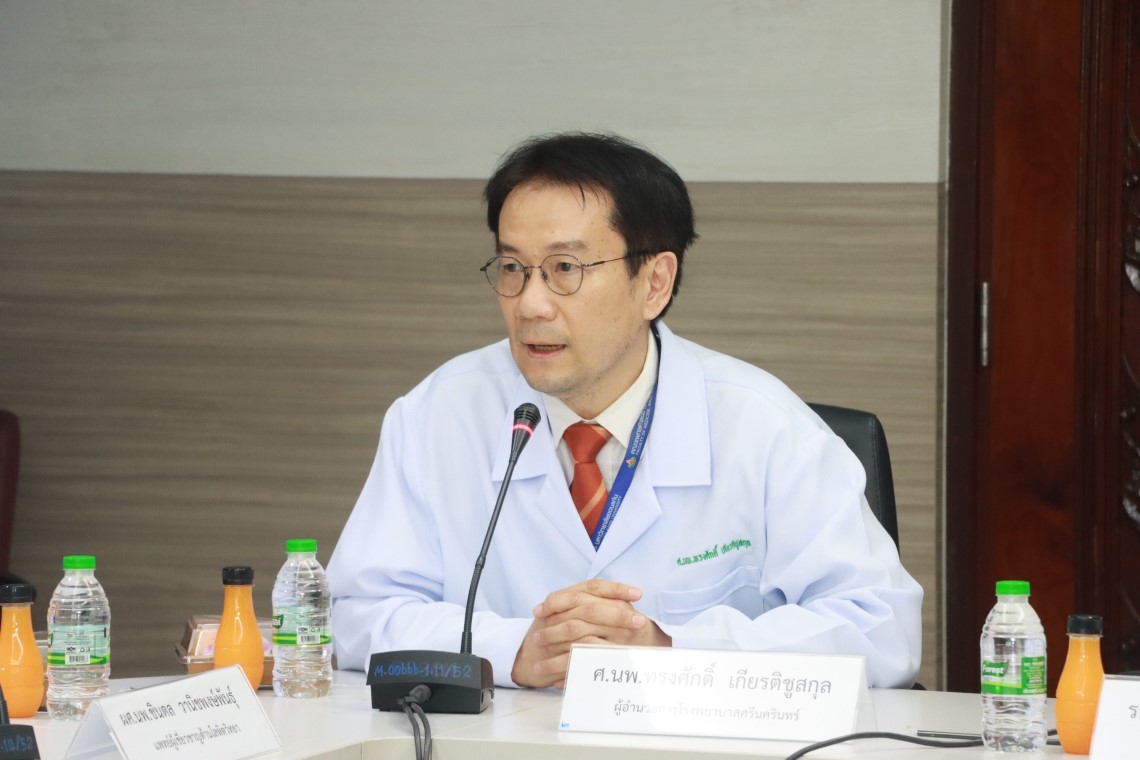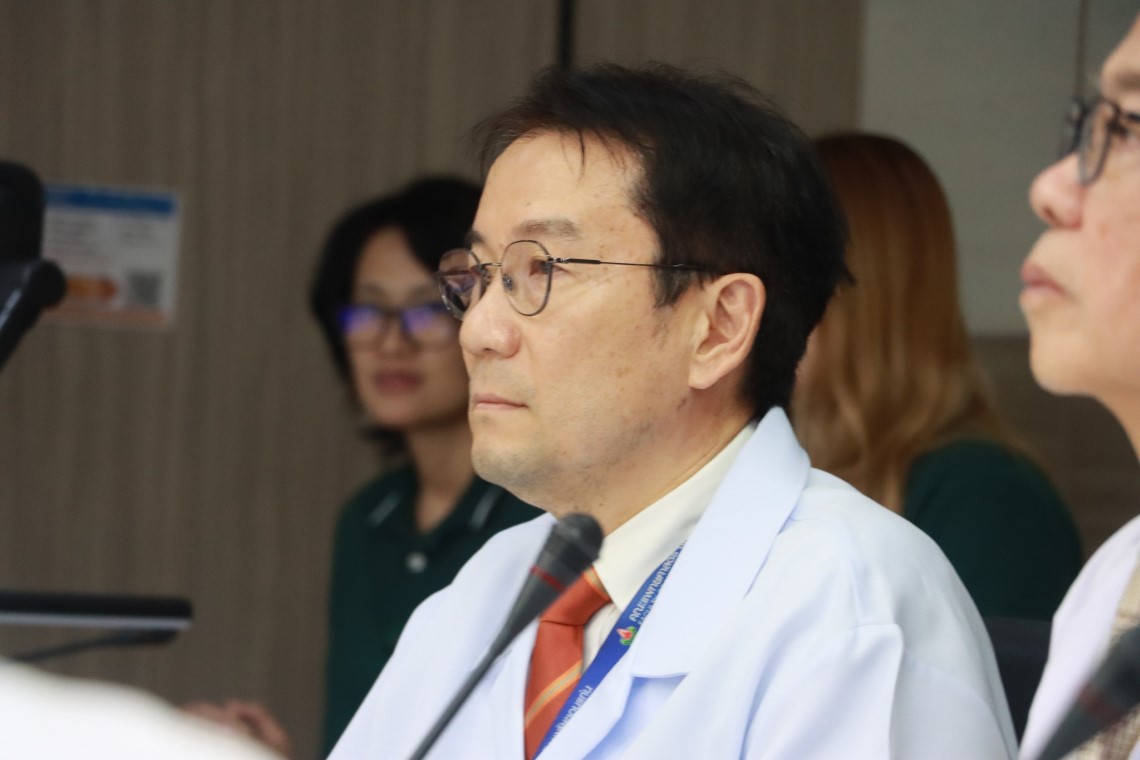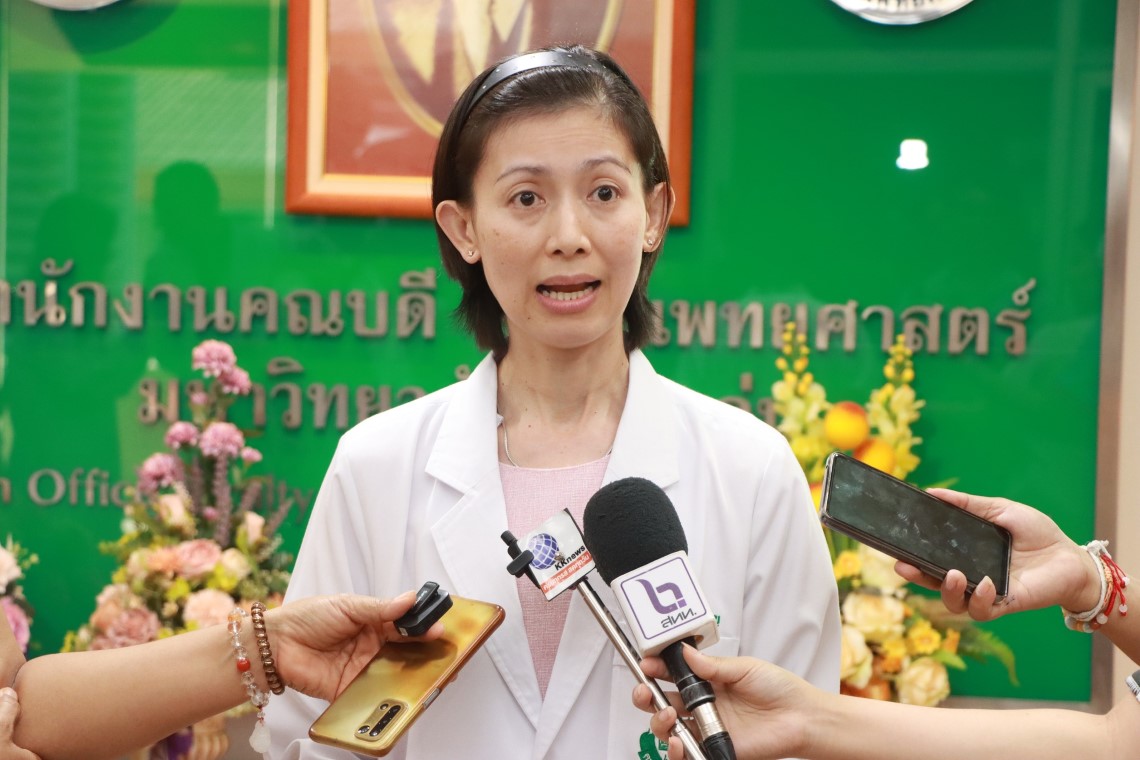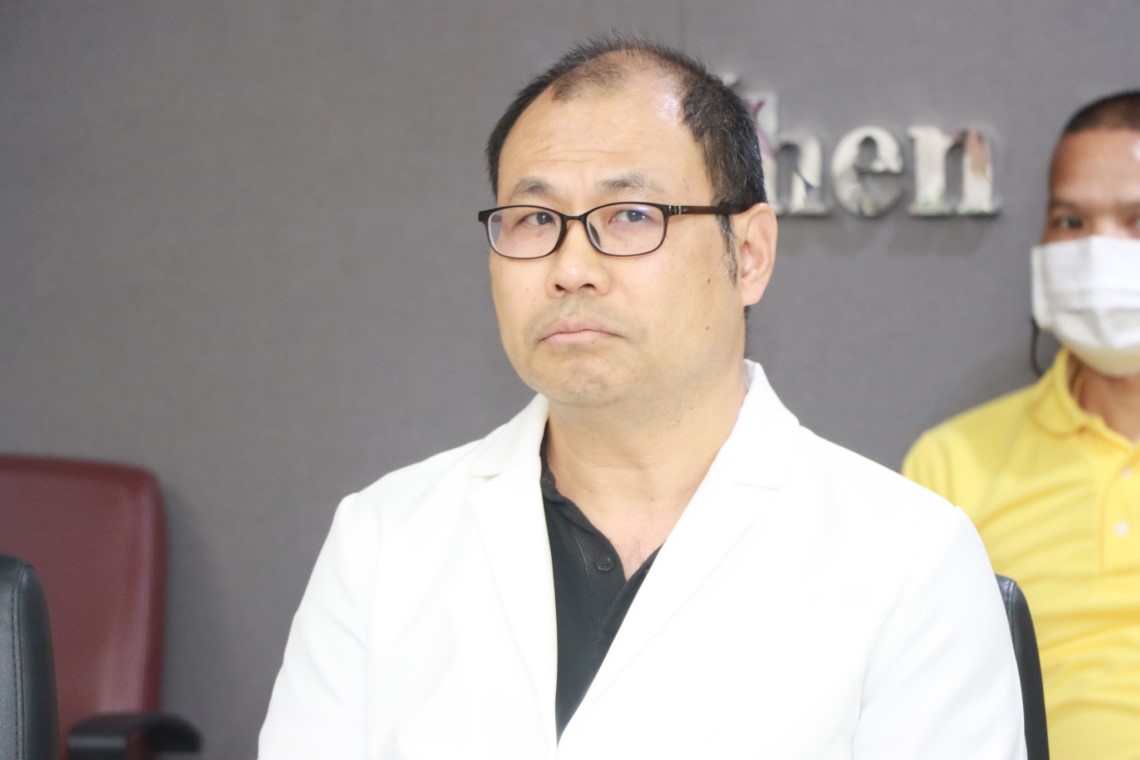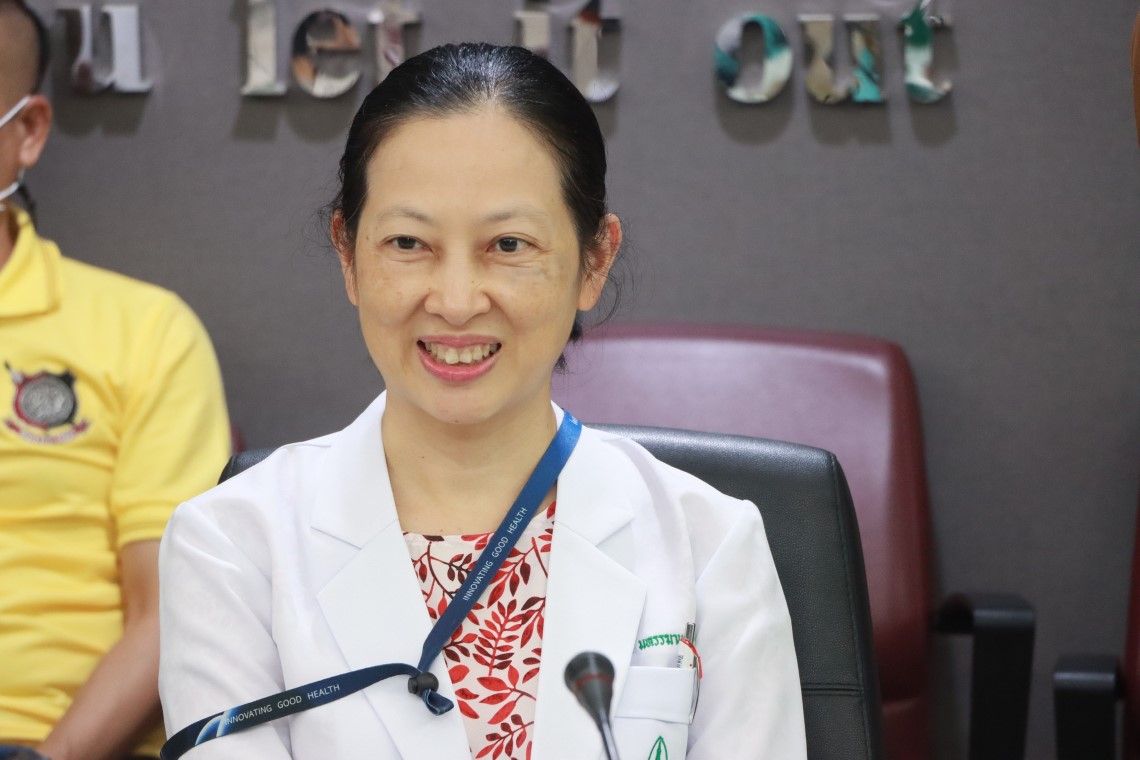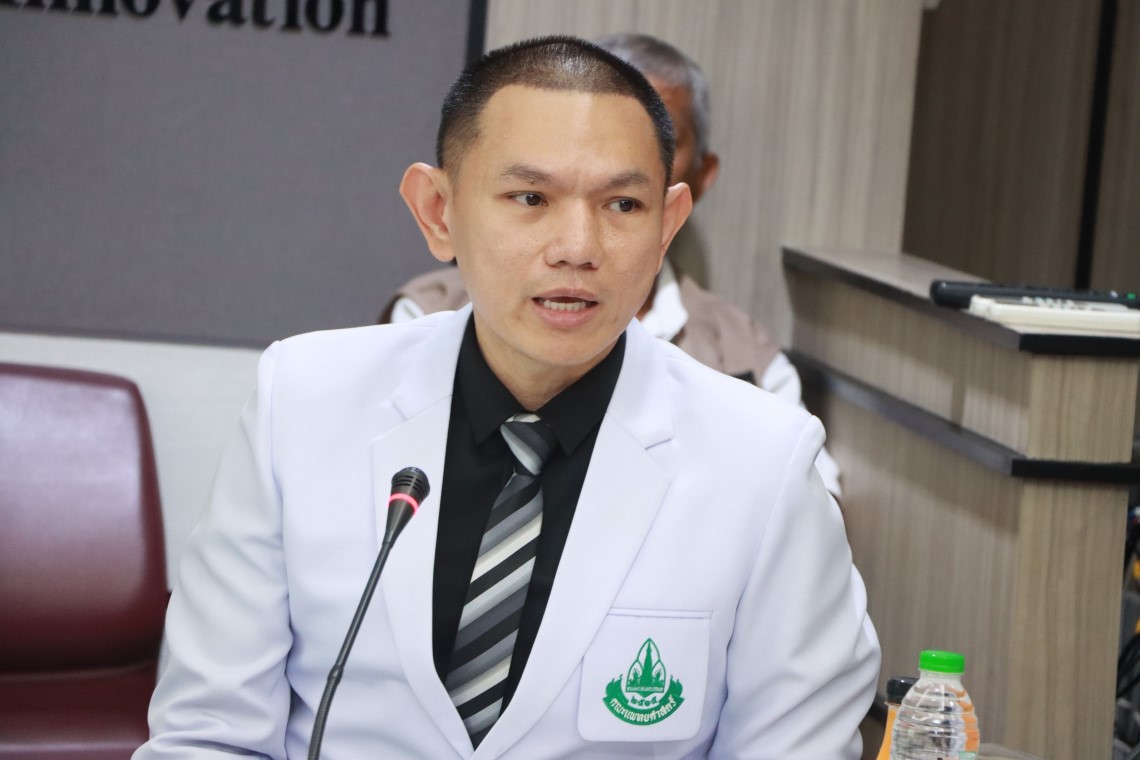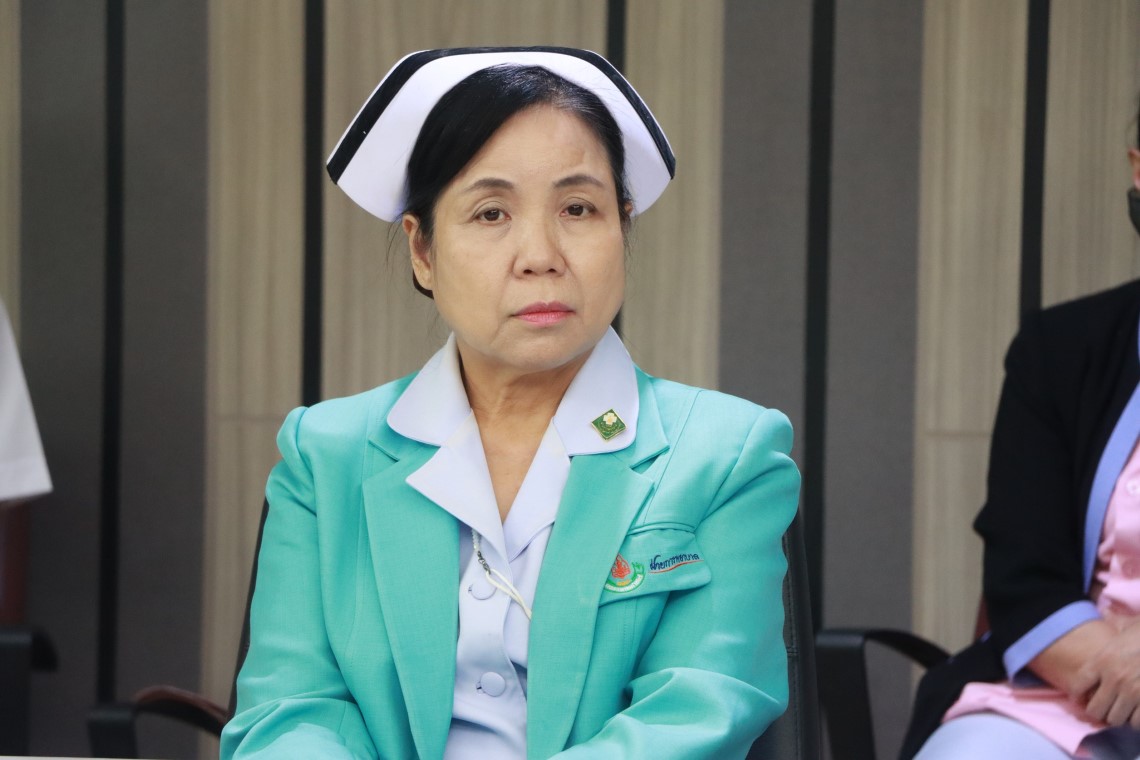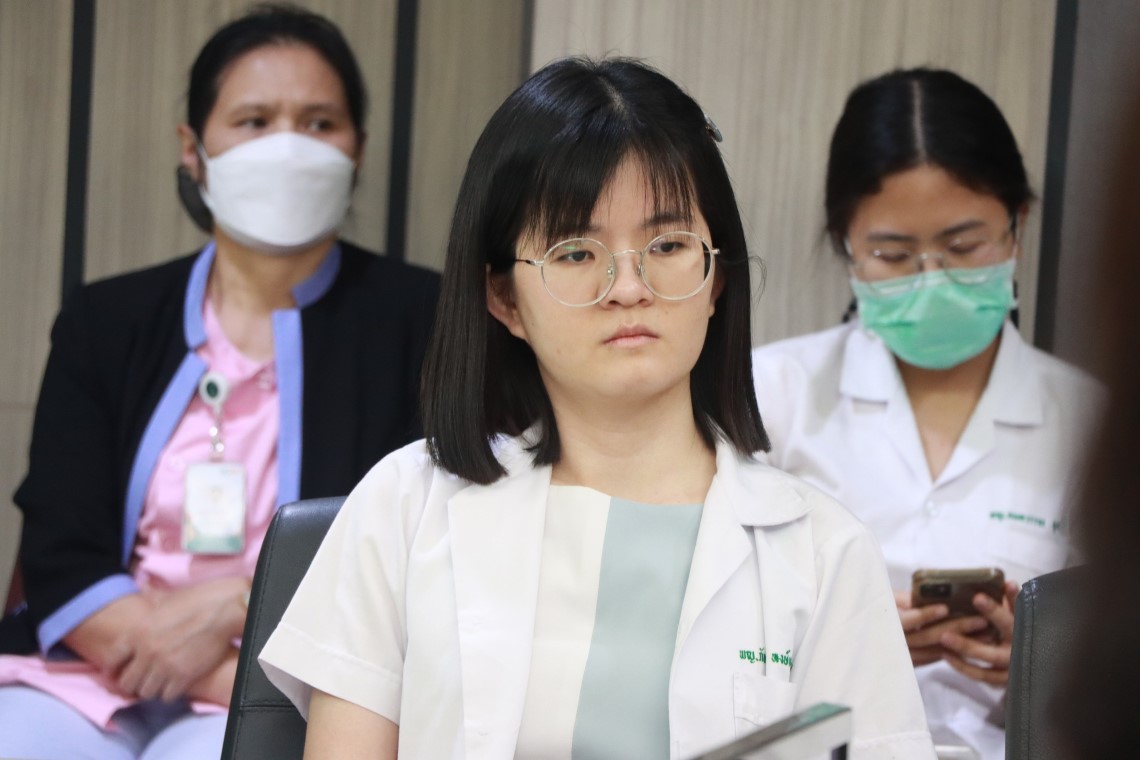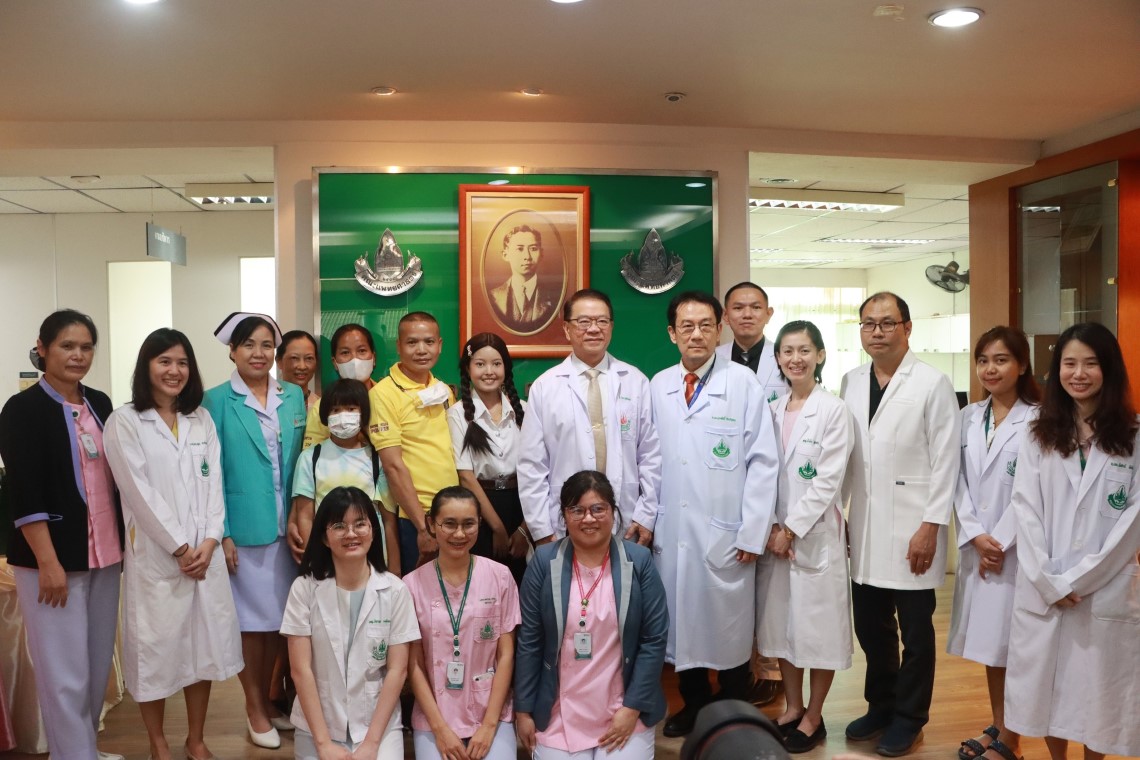
On February 22, 2024, KKU Srinagarind Hospital held a press conference to announce the first Isan Hematopoietic Stem Cell Transplantation (HSCT) for scleroderma. The press conference was led by Assoc. Prof. Apichat Jiravuttipong, MD, Dean of KKU Faculty of Medicine, Prof. Songsak Kiatchoosakun, MD, Srinagarind Hospital Director, Prof. Chingching Fucharoen, MD, Rheumatology (Muscle and Joint) specialist, Department of Medicine, Asst. Prof. Chinadol Wanitpongpun, Hematology specialist, Department of Medicine, and Ms. TophuKhieo, a scleroderma patient at Srinagarind Hospital.
Assoc. Prof. Jiravuttipong said, “Our faculty of Medicine has been developing advanced medical technology for more efficient patient treatment, and HSCT is regarded as an example of a highly effective treatment.”
Prof. Fucharoen stated, “Scleroderma is a disease in which the immune system does not work properly, and it stimulates not only somatic cells to continuously produce collagen fibers but also fibrosis formation binding to various parts of our body. As a result, it causes tight and hard skin on the human face, fingers, toes, arms, legs, chest, and abdomen. It also affects internal organs including pulmonary and myocardial fibrosis that can lead to disability and mortality.”
She also added, “The scleroderma is mostly found in middle–aged to older people (about 40–50 years of age) and is hardly found in younger people. The global rate of scleroderma is 24:100,000 people while Isan regional rate is 40:100,000 people. According to the Bureau of Epidemiology, Department of Disease Control, Ministry of Public Health, the number of scleroderma patients in northeastern and northern Thailand is higher than other regions.”
Ms. TophuKhieo, an 18-year-old patient, started her treatment on January 2022 after initial referral to a rheumatologist. She presented with pulmonary fibrosis and HSCT treatment was started. After 14-days of treatment, her skin had softened, her skin color returned to normal and joints were more flexible. After 3 months of treatment, she could stretch out her fingers, elbows, and arms smoothly. Finally, her pulmonary fibrosis resolved and she returned to normal daily activities.
She said, “Scleroderma is a rare disease. Many people don’t know about it and how to deal with it. If you have any skin disorders or suspect you have scleroderma, you’d better see a doctor— the faster, the better.”
Asst. Prof. Wanitpongpun spoke about the HSCT procedure; “Currently, the HSCT innovation is an effective treatment alternative to help patients return to normal function. Technically, the HSCT procedure has 4 main steps. First, a thorough physical examination is performed. Second, physicians stimulate and collects stem cells. Third, high–dose chemotherapy is used to kill patients’ abnormal cells and reset the immune system. Fourth, stem cells are injected into the patients for their physical recovery.”
He also added, “HSCT is normally used in patients who are not too old and their body parts are still working well. Patients who are most affected by the disease are selected for HSCT while those who are older and have low severity don’t need HSCT.”
Prof. Kiatchoosakun’s closing speech “We would like to express our gratitude to all Srinagarind Day Fund donors. Your donations have supported us a lot in caring for low–income patients with complications and in the development of this medical technology and innovation. This case is one example of those supported by the Fund. All hopes can be supported by the power of giving. Come and be part of our Srinagarind Day Fund, Faculty of Medicine, Khon Kaen University.”
Reporting by Sathaphorn Onlamun
Editing by Prof. John F Smith

